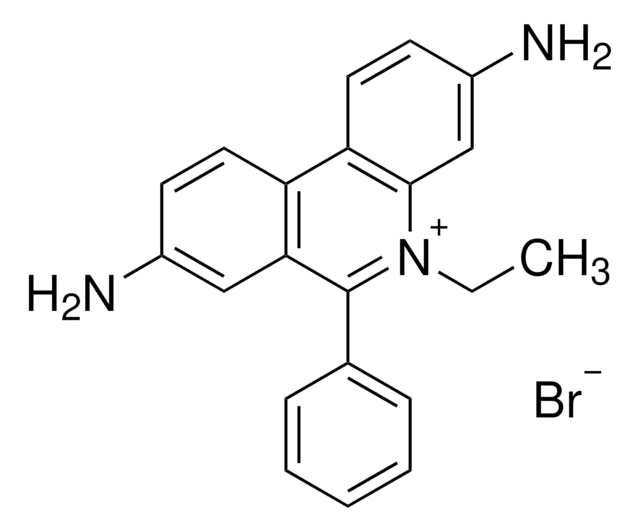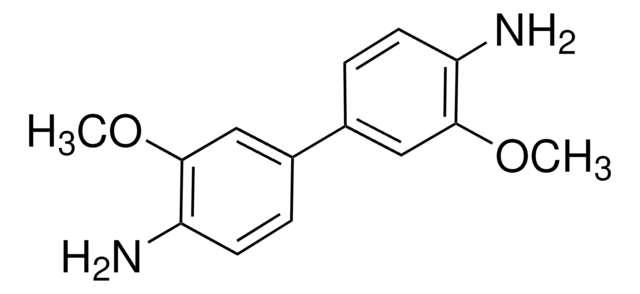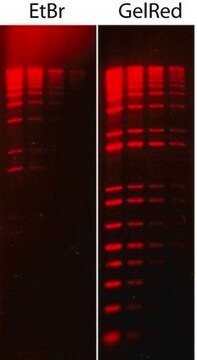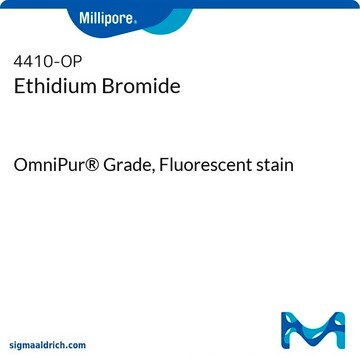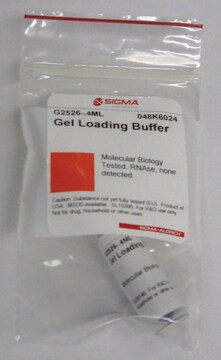Kluczowe dokumenty
E1510
Ethidium bromide solution
BioReagent, for molecular biology, 10 mg/mL in H2O
Synonim(y):
3,8-Diamino-5-ethyl-6-phenylphenanthridinium bromide, EtBr, Homidium bromide
About This Item
Polecane produkty
klasa czystości
for molecular biology
Poziom jakości
linia produktu
BioReagent
stężenie
10 mg/mL in H2O
metody
electrophoresis: suitable
przydatność
suitable for gel electrophoresis
ciąg SMILES
[Br-].CC[n+]1c(-c2ccccc2)c3cc(N)ccc3c4ccc(N)cc14
InChI
1S/C21H19N3.BrH/c1-2-24-20-13-16(23)9-11-18(20)17-10-8-15(22)12-19(17)21(24)14-6-4-3-5-7-14;/h3-13,23H,2,22H2,1H3;1H
Klucz InChI
ZMMJGEGLRURXTF-UHFFFAOYSA-N
Szukasz podobnych produktów? Odwiedź Przewodnik dotyczący porównywania produktów
Zastosowanie
- as a stain to visualize U937 cells to assess cell viability
- to detect polymerase chain reaction products
- in agarose gel electrophoresis based gel retardation assay
Działania biochem./fizjol.
Rekonstytucja
produkt powiązany
Hasło ostrzegawcze
Danger
Zwroty wskazujące rodzaj zagrożenia
Zwroty wskazujące środki ostrożności
Klasyfikacja zagrożeń
Acute Tox. 3 Inhalation - Muta. 2
Kod klasy składowania
6.1D - Non-combustible acute toxic Cat.3 / toxic hazardous materials or hazardous materials causing chronic effects
Klasa zagrożenia wodnego (WGK)
nwg
Temperatura zapłonu (°F)
Not applicable
Temperatura zapłonu (°C)
Not applicable
Wybierz jedną z najnowszych wersji:
Masz już ten produkt?
Dokumenty związane z niedawno zakupionymi produktami zostały zamieszczone w Bibliotece dokumentów.
Klienci oglądali również te produkty
Protokoły
The CRISPR (Clustered Regularly Interspaced Short Palindromic Repeats) system was discovered in bacteria, where it functions as an adaptive immune system against invading viral and plasmid DNA.
The GenElute Blood Genomic DNA Kit Protocol provides a simple and convenient way to isolate pure genomic DNA from fresh or aged whole blood.
The GenElute Mammalian Genomic DNA Purification Kit Protocol describes the isolation of pure, high molecular weight DNA from a variety of mammalian sources.
Protokół zestawu do oczyszczania genomowego DNA ssaków GenElute opisuje izolację czystego DNA o wysokiej masie cząsteczkowej z różnych źródeł ssaków.
Powiązane treści
Bromek etydyny jest dobrze znanym i szeroko stosowanym barwnikiem fluorescencyjnym w badaniach biotechnologicznych.
Nasz zespół naukowców ma doświadczenie we wszystkich obszarach badań, w tym w naukach przyrodniczych, materiałoznawstwie, syntezie chemicznej, chromatografii, analityce i wielu innych dziedzinach.
Skontaktuj się z zespołem ds. pomocy technicznej